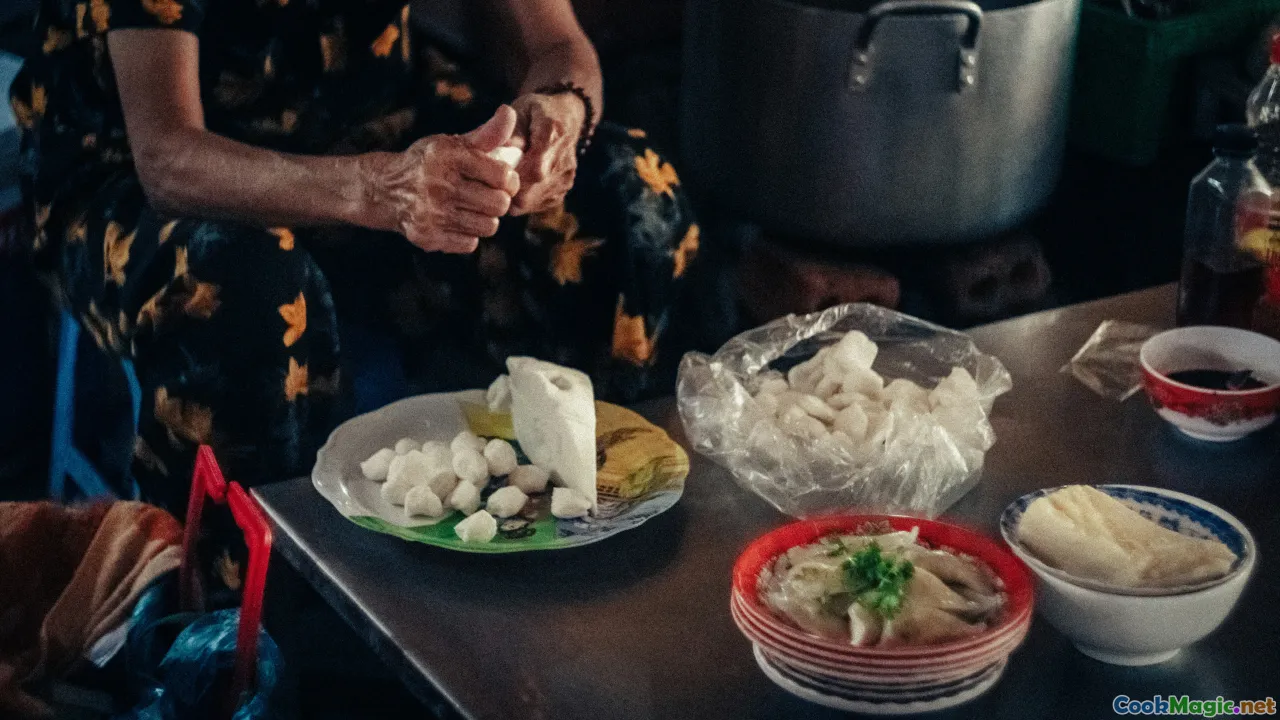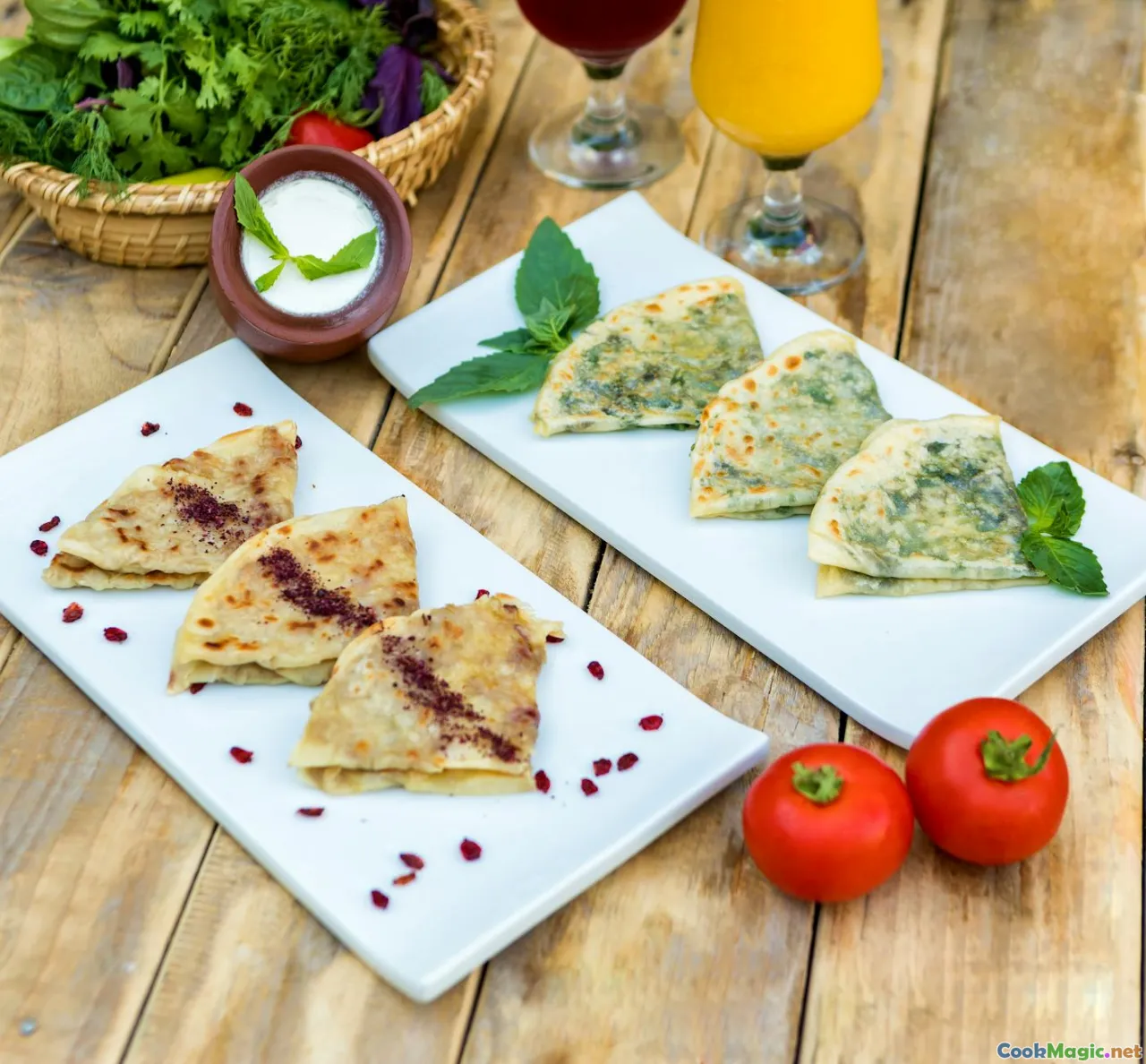Savory Secrets Behind Azerbaijani Dushbara Dumplings
11 min read Explore the flavorful history, preparation techniques, and cultural significance of Azerbaijani Dushbara dumplings. September 08, 2025 21:05
Savory Secrets Behind Azerbaijani Dushbara Dumplings
Picture a steaming bowl of dushbara, its delicate, translucent threads gently bobbing in aromatic broth, served piping hot in a cozy apartment in Baku or on the bustling street corners of Ganja. The mere sight of these tiny, intricately folded dumplings invites a sensory journey—one that awakens memories of family gatherings, centuries-old traditions, and the bold, layered flavors of Azerbaijan’s rich culinary tapestry.
Dushbara is more than just a dish; it’s an emblem of Azerbaijani hospitality, craftsmanship, and history. Its humble appearance belies complex techniques, regional variations, and a love passed down through generations. As someone who’s had the privilege of tasting authentic Azerbaijani cuisine across different regions, I am continually captivated by the mysteries behind this beloved dish.
Join me as we peel back the savory curtain on Azerbaijan’s culinary gem—dushbara dumplings—and uncover the secret ingredients, ancestral techniques, and cultural stories that make each spoonful an unforgettable experience.
The Origins and Cultural Significance of Dushbara

Dushbara’s roots run deep in Azerbaijani history, which itself is at the crossroads of East and West. The dish’s name roughly translates to "poor man's dough" or "small dough," reflecting its humble beginnings as a nourishing, everyday meal crafted from ingredients readily available to Azerbaijani households.
Historically, dushbara has been a staple during cold seasons, its warm, broth-like soul comforting locals long before modern refrigeration and mass-produced foods. It became a symbol of community and kinship, especially when prepared during Hajvāli feasts or family celebrations. Each Azerbaijani region offers a unique take—no two bowls taste quite the same—yet they all share a common essence: a testament to resourcefulness and taste.
In more rural parts of Azerbaijan, women’s craftsmanship in folding each tiny dumpling is akin to a family tradition—an act filled with love and meticulous precision, often passed from mother to daughter. This communal and familial aspect elevates dushbara beyond sustenance, making it a cultural ritual.
The Craftsmanship: How to Prepare Perfect Dushbara

The secret of truly exquisite dushbara lies in its delicate craftsmanship. While you might be tempted to think it’s a simple dish, every fold, pinch, and ingredient contributes to its nuanced flavor and texture.
Ingredients:
- 2 cups of fine wheat flour
- 1/2 teaspoon of salt
- Cold water (about 1/3 cup, adjusted as needed)
- Small quantities of beef or lamb (optional, for filling)
- Garlic, vinegar, and dill for the flavorful broth
Dough Preparation:
- Mix the dry ingredients. Combine flour and salt in a large mixing bowl.
- Knead the dough. Gradually add cold water, kneading vigorously until the dough becomes soft yet elastic. Cover and let it rest for 30 minutes.
Making the Dumplings:
- Roll thin—think parchment paper—then cut into small squares approximately 1.5 cm on each side.
- Fill and fold. Place a tiny pinch of filling (or simply pure dough for vegetarian versions) into the center of each square.
- Shape with precision. Fold the square into a triangle or cylindrical shape, pinching edges tightly to avoid leaks.
Cooking the Dushbara:
- Boil a potent broth. Traditionally, broth is made from beef or lamb bones, boiled with garlic and herbs, creating a fragrant, hearty base.
- Introduce the dumplings. Drop the tiny parcels into rapidly boiling broth; within minutes, they will float to the surface, signaling readiness.
- Add garlic-vinegar sauce. To serve, pour some boiling broth over minced garlic mixed with vinegar, which imparts zing and depth.
This process demands patience, but the reward is a spoonful of intimately flavored, tender dumplings immersed in fragrant, garlic-infused broth.
Variations and Regional Interpretations

While the basic method remains consistent, regional variations abound, influenced by local ingredients and culinary preferences.
Ganja and Shirvan Styles
In Ganja, dushbara tends to be larger, with slightly thicker dough and a more robust broth infused with cumin and turmeric. Shirvani versions might incorporate a richer meat filling along with aromatic herbs like mint and parsley.
Mary and Lankaran Variants
In Lankaran on Azerbaijan’s southern coast, the broth often includes fresh seafood like anchovies or crabs, highlighting the area's maritime influence.
Vegetarian and Modern Twists
Contemporary cooks are experimenting with fillings such as seasoned potato, pumpkin, or even mushrooms, expanding the dish's appeal beyond traditional borders.
Serving and Pairing: Elevating the Dushbara Experience

Authentic Azerbaijani dushbara is often served in a traditional metal or ceramic bowl, with a generous ladle of hot broth, herbs, and a squeeze of garlic-vinegar sauce—a combination that awakens the senses.
Pair it with a glass of Azerbaijani black tea, with its subtle floral notes, or a sip of local grape brandy (caz). Fresh herbs like dill and cilantro sprinkled atop add a burst of green and aroma that enhances the dish’s depth.
For an authentic experience, present the small dumplings with individual garnishes, allowing diners to customize their bites—whether more garlic acidity, fresh herbs, or a dash of pepper.
Tips from the Heart: Crafting Dushbara Like a Master

- Use Very Cold Water: Cold water keeps the dough firm and easy to handle, crucial for achieving thin, elastic sheets.
- Don’t Overfill: Tiny amounts of filling ensure delicate dumplings that cook evenly and don’t burst open.
- Roll Carefully: The thinner the dough, the more delicate the dumplings, which results in a more refined final texture.
- Cook in Batches: Avoid overcrowding the pot to keep the temperature stable and prevent sticking.
- Taste and Season the Broth Well: The broth is the soul of dushbara; it must be rich, savory, and infused with garlic.
The Emotional Resonance of Dushbara

Beyond the ingredients and techniques, dushbara offers a glimpse into Azerbaijan’s warm, hospitable soul. It’s a dish that brings family and friends together around a steaming bowl, sharing stories, laughter, and love. Many Azerbaijani households consider preparing dushbara an act of celebration—an opportunity to bond and preserve heritage.
I recall visiting a humble kitchen in Sheki, where an elderly grandmother painstakingly folded each tiny dumpling while narrating her childhood stories. When she finally served the steaming bowl, the rich aroma of garlic, meat, and herbs enveloped us. That moment underscored how food is an indelible thread pulling generations together.
In today’s fast-paced world, making dushbara can be a meditative act—a reaffirmation of cultural identity and personal connection.
A Personal Invitation to Taste and Create

To truly embrace Azerbaijani cuisine, one must experience dushbara firsthand. Seek out local Azerbaijani restaurants, try your hand at crafting the tiny dumplings, or even attend a traditional cooking class where artisans share their secrets.
Imagine the joy of mastering that elusive perfect fold, the pride in serving a home-cooked bowl rich with tradition, and the warmth of sharing this art with loved ones.
Azerbaijani dushbara isn’t just a dish—it's a testament to a nation’s resilience, ingenuity, and love for life’s simple, savory pleasures. As the aroma of garlic and meat wafts through your kitchen, let it remind you that some of the best secrets are — quite literally — wrapped in tiny, tender parcels.
Embark on this culinary journey, and may your kitchen be filled with the same warmth and wisdom that has made dushbara a treasured cultural staple for generations.









